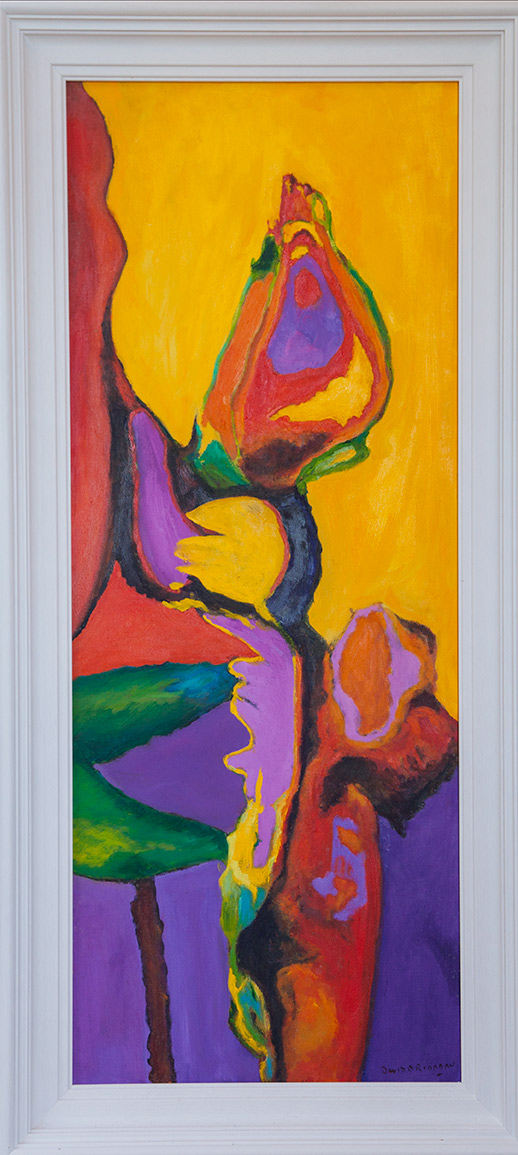Currently on exhibition (until 26th April) at the Cork County Libary, Carrigrohane Road, Cork City is “Sacred Presences”, a collection of icons by two iconographers from Crete, Nikolaos Griniezakis and Eftychia Ilia, and one from Ireland, Fr David O’Riordan (see my previous post on the latter.) It was organised and curated by Bernadette Burns.
The iconography on display is very beautiful and deserves to be seen in reality – the photographs below do not do them justice (click on any photo to see a larger version.)
The exhibition opened to a capacity crowd on 27th March. It was launched by Peadar Ó Riada in the presence of the Mayor of County Cork, Barbara Murray.
Peadar Ó Riada opening the exhibition.
Mayor of County Cork, Barbara Murray, with (L to R) Cork County Council Arts Officer, Ian McDonagh, David O’Riordan, Peadar Ó Riada, Eftychia Ilia
The artists: (L to R) Fr David O’Riordan, Eftychia Ilia, Nikolaos Griniezakis
Eftychia Ilia and Nikolaos Griniezakis with organiser and curator Bernadette Burns (centre)
Designer and artist Rita Scannell (left) with Sculptor Ken Thompson and Rachel Thompson
The Icons
Nikolaos Griniezakis
Virgin Mary. 95cm x 73cm. Tempera and 24 carat gold leaf on marine wood.
St John the Baptist. 45cm x22cm. Tempera on very old wood.
Prophet Elias. 40cm x 30cm. Tempera and 24 carat gold leaf on wood.
Virgin Mary “odigitria”. 102cm x 35cm. Tempera and 24 carat gold leaf on very old wood.
Christ. 102cm x 35cm. Tempera and 24 carat gold leaf on very old wood.
St George with Horse. 40cm x 28cm. Tempera and 24 carat gold leaf on wood.
Christ with Throne. 58cm x 22cm. Tempera on very old wood.
Lie Down. 30cm x 22cm. Tempera on olive tree wood.
Eftychia Ilia
St John the Forerunner. 40cm x 50cm. Tempera on wood panel.
St Mercurius the Great, Martyr of Caesarea in Cappadocio. 24cm x 33cm. Tempera on wood.
Annunciation. 50cm x 20cm x 2 pieces. Tempera on wood.
Virgin Mary. 30cm x 42cm. Tempera on wood panel.
Crucifixion. 43cm x 31cm. Tempera on wood.
Christ. 30cm x 42cm. Tempera on wood.
Salutation to the Myrhh Bearers. 53cm x 33cm. Tempera on wood.
St Simeon, the God-Receiver. 43cm x 30cm. Tempera on wood.
Fr David O’Riordan
St Brendan the Navigator. 28cm x 34cm. Tempera on wood panel.
Theotokos (Loving Kindness). Version 1. 32cm x 43cm. Tempera on wood panel.
St George. 28cm x 39cm. Tempera on wood panel.
Crucifixion with Two Standing Figures, Mary and John. 32cm x 42cm. Tempera on wood panel.
St Simeon. 30cm x 42cm. Tempera on wood panel.
Theotokos Version 2. 32cm x 43cm. Tempera on wood.
Angel Gabriel. 27cm x 37cm. Tempera on wood.









